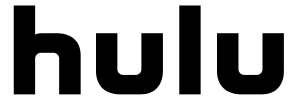
Trusted by leading brands and startups








































Land your dream job as
an Industrial Designer
Getting your foot in the door with an amazing company can be a challenge. Our recruiting experts are ready to help you land your next dream role.
View Open Roles
Hire
an Industrial Designer
With over 40 years of recruiting experience, we can help you fill any open role, plus, offer insight into current market rates and team structuring.
Find Talent

FAQ
What is an Industrial Designer?
An industrial designer is a professional who combines artistic and creative skills with technical knowledge to design and develop a wide range of products that are not only aesthetically appealing but also functional, user-friendly, and manufacturable. The primary focus of industrial design is on the form, function, usability, and overall user experience of products across various industries.
Industrial designers play a crucial role in shaping the physical world around us by bridging the gap between artistic creativity and practical functionality. They contribute to enhancing user experiences, improving product usability, and creating innovative solutions to various design challenges.
What are Measurable KPIs for an Industrial Designer?
Measurable Key Performance Indicators (KPIs) for industrial designers can vary depending on the responsibilities and goals of the role within the office. Here are some commonly used KPIs for industrial designers:
- Number of Successful Product Launches: This KPI measures the number of projects that the industrial designer has worked on that resulted in successful product launches. It reflects their ability to translate concepts into marketable products.
- Time-to-Market: Measure the time taken from concept initiation to product launch. A shorter time-to-market indicates efficient design processes and faster product development.
- Adherence to Budget: Evaluate whether the designer's projects are completed within the allocated budget. This demonstrates their awareness of cost constraints and their ability to design within those limits.
- Patents and Intellectual Property: If applicable, track the number of designs or concepts that result in patent applications, showcasing the designer's contribution to innovation.
- Client or Stakeholder Satisfaction: Collect feedback from clients, stakeholders, or managers to assess their satisfaction with the designer's work in terms of meeting project goals and expectations.
- Efficiency in Design Tools: If the designer uses specific software or tools, their proficiency and speed in using these tools can be measured.
KPIs should align with the targeted objectives and responsibilities of the industrial designers job description in an organization. It's important to set specific targets and update these KPIs regularly to ensure relevance.
What Experience is Needed to be an Industrial Designer?
To be an industrial designer, a combination of education and practical skills is essential. Typically, a bachelor's degree in industrial design, product design, or a related field is required. This education provides a foundation in design principles, materials, manufacturing processes, and software tools. Strong artistic and creative abilities are crucial, enabling the designer to envision and communicate ideas through sketches, drawings, and digital renderings. Problem-solving skills and a user-centered mindset are vital for creating products that are functional and user-friendly.
Practical experience gained through internships, design projects, or entry-level positions helps to hone skills, understand real-world manufacturing challenges, and build a portfolio showcasing design expertise. Proficiency in design software, knowledge of industry trends, and the ability to collaborate with cross-functional teams are also key attributes for success in this field.
What are the Differences Between an Industrial Designer vs a Product Designer?
Industrial design and product design are closely related fields that share common principles but also have distinct focuses. Industrial designers and product designers both play pivotal roles in creating functional and visually appealing products. Industrial designers specialize in designing products that balance aesthetics, functionality, and manufacturability across various industries, ranging from consumer electronics to furniture. They emphasize user experience, often delving into ergonomics, form exploration, and the overall interaction between users and products. Their work involves understanding market trends, materials, manufacturing processes, and translating concepts into tangible designs that address user needs and preferences.
On the other hand, product designers have a broader scope that encompasses the entire lifecycle of a product, extending beyond its physical design. Product designers not only consider the aesthetics and usability of a product but also dive into factors like branding, marketing, and business strategy. They focus on aligning the product's design with the brand identity, creating a coherent user experience across various touchpoints, and ensuring that the product meets market demands. Product designers collaborate closely with industrial designers, engineers, marketers, and other professionals to guide the product's development from inception to market launch.
In essence, while industrial designers specialize in crafting the physical and experiential aspects of a product's design, product designers take a more holistic approach by considering the broader context, including brand, business goals, and market positioning, to create products that resonate with consumers on multiple levels.
How much does it cost to work with Career Group Companies?
For candidates, our resources are free to utilize in their job search.
For companies seeking to utilize our services, bill rates vary depending on the position, employment type, experience level, and length of the assignment. After contacting one of our offices, your account manager can speak to specifics.
.avif)








.avif)

.avif)
.png)